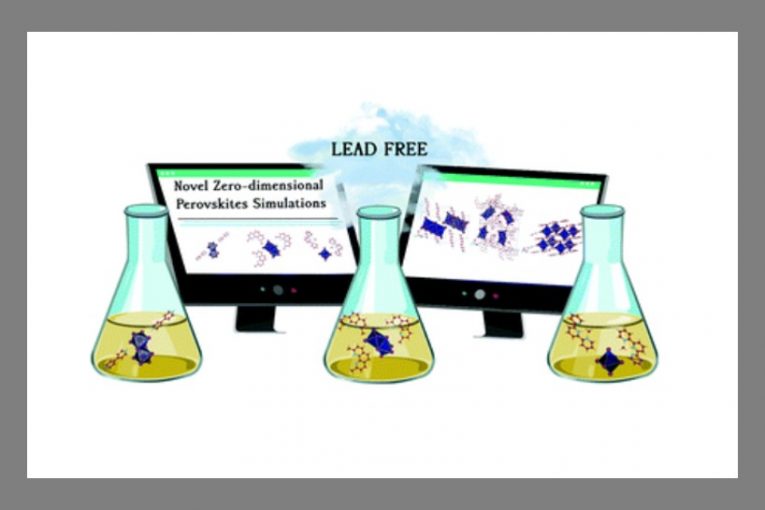Theoretical-experimental collaboration among divisions of CINE allows one to understand low dimensionality leadless perovskites.

One of the main obstacles to the production of solar cells from perovskites with commercial purposes is the presence of lead, a toxic element, in its composition. Another limitation is the instability of these materials, which makes its good performance not be maintained in time. However, there are paths, which can be followed to resolve both problems, with the use of low-dimensionality perovskites. In these structures, it becomes relatively easy to replace lead by bismuth (an element with properties similar to lead, but not toxic). Additionally, they present greater stability than their larger dimension relatives. Thinking about this possibility, CINE researchers joined experimental and theoretical efforts to study bismuth perovskites with the lowest possible dimensionality, zero dimension (0D).
The term “perovskites” designates a family of materials with different compositions and the same arrangement of cations and anions, forming octahedrons which join each other in networks. “Zero dimensionality” refers to the fact that it is not possible for these networks to extend infinitely in any direction. To put it simply, they are nanometric scale structures in height, breadth and depth.
The work gathered competencies and infrastructure from the Computing Science of Materials and Chemistry Program, with broad experience in computational methods, and Division of Dense Energy Carriers, with expertise in research on perovskites for solar cells. The synergy among the theoretical and experimental data permitted an understanding of the structural and optoelectronic properties of three new 0D bismuth perovskites, and, thus, to propose applications for them. IN the energy field, the study indicated potential of application of these perovskites as dielectrics for capacitors and as sources of bismuth in the preparation of leadless perovskites. Another possibility was their combination with perovskites of other dimensions, to increase the material’s resistance of UV radiation and moisture, prolonging their stability.
The experimental work was conducted at UNICAMP’s Chemistry Institute and involved the then post-doc Willian Xerxes Coelho Oliveira and his supervisor, professor Ana Flávia Nogueira, in the synthesis and characterization of the perovskites. “It was challenging to meet the conditions to form single crystals and obtain transparent films”, says Willian, who explains that it was necessary to synthetize the single crystals of these perovskites to be able to understand how the atoms and molecules are organized in these new materials. On the films, produced to study the properties of the material, Willian tells us that the greatest difficulty encountered was to obtain a high level of transparency to be able to analyze their optical properties. “This required many tests and the so-called solvents engineering”.
The computational studies, based on the theory of the density functional, were conducted at the São Carlos Chemistry Institute of São Paulo University (IQSC-USP) by the PhD student Mailde da Silva Ozorio, with the participation of post-doc Julian F. R. V. Silveira and supervision by professor Juarez L. F. Da Silva. The authors also used resources from the supercomputer SDumont from the National Scientific Computing Laboratory (LNCC), which was essential to accelerate several of the simulations. Several challenges were faced during the project, in particular, the discrepancy between theoretical and experimental data for one of the compounds, which was only resolved after understanding the role of the water molecules existing in the crystalline structure.











